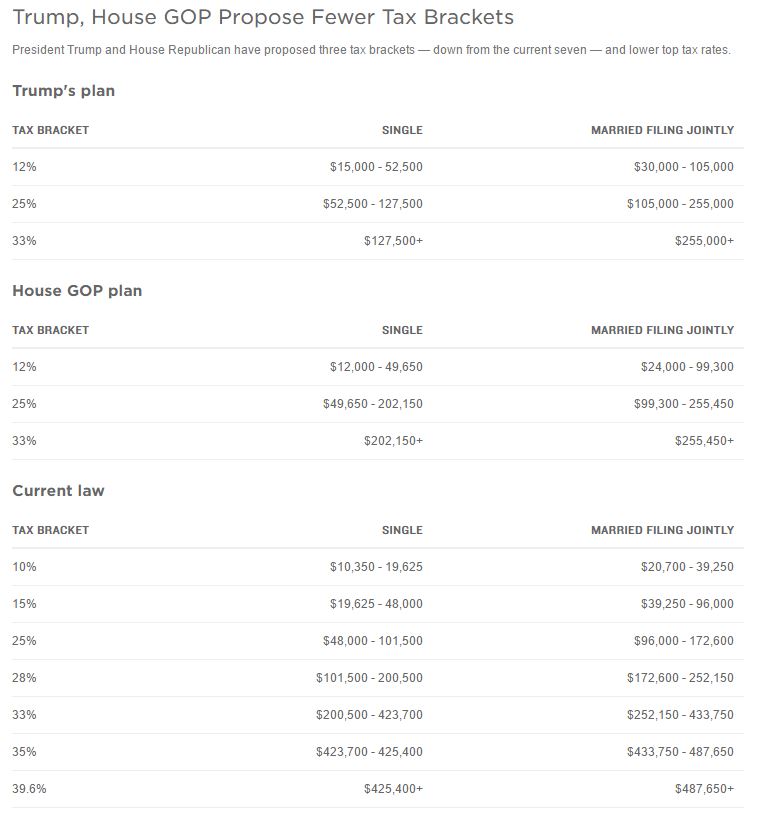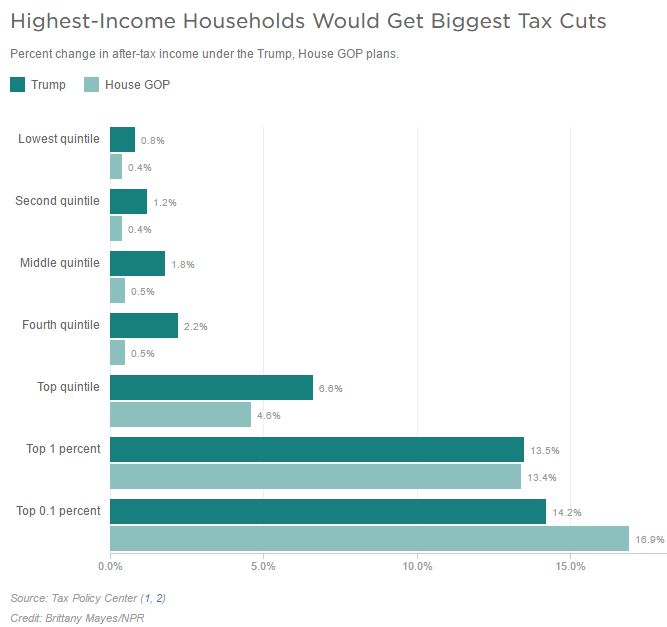While the outlines of the House plan are clear, the Trump White House has not issued a plan beyond the broad outlines the president campaigned on. It’s unclear when the president’s plan will be unveiled.
- Trump’s plan would reduce the top corporate tax rate from 35 percent to 15 percent, and also allow lots of non-corporate businesses, like sole proprietors and partnerships to pay that low rate.
- The House would cut the corporate rate to 20 percent.
- Among the biggest changes is something called a border adjustment tax, or BAT. It would levy a 20 percent tax on all imports of goods and services into the U.S.
- On the other hand, U.S. exports of goods and services wouldn’t be taxed at all.
Is stronger growth the answer?
If the Trump administration rejects the idea of a border adjustment tax, it will be hard pressed to find a way to make its tax plan “revenue neutral.” And one path open to it would be more aggressive “dynamic scoring.” Mnuchin has hinted that is a strategy the White House will employ. When asked in a CNBC interview how the Trump tax cuts would be paid for, he said stronger growth would produce enough tax revenue to offset the revenue losses from lower tax rates.
So just how aggressive might the White House growth estimates be? During the presidential campaign, Trump promised his policies would boost the economy enough so it would grow at an average rate of 4 percent a year. Mnuchin said Thursday the administration could produce growth rates averaging over 3 percent a year. During all of the Obama administration the economy grew, on average, about 2 percent a year.
Many economists doubt the Trump plan can change the growth equation by that much. The two main agents of growth are an increasing numbers of workers, and increases in the productivity of those workers. But the U.S. workforce is growing very slowly as baby boomers retire. In fact, immigration is the biggest source of growth in the workforce, and Trump has vowed to limit that.
As for productivity growth, it has been dismal in the past decade. It’s not clear why, but greater business investment in plants and technology could help. Republicans say cutting taxes will fuel that investment. But productivity expert Robert Gordon, a Northwestern University economist, says there’s little evidence that big tax cuts have boosted growth significantly. So predicting an extra percentage point of growth, a 50 percent increase from current levels, would be, to use a phrase President Trump likes, “phenomenal.”
Will deficit hawks buy it?
The Congressional Budget Office is the official arbiter of tax proposals being considered by Congress. The CBO will almost certainly produce a forecast far below the Trump White House prediction. There’s a long history of administrations, both Republican and Democrat, producing rosier growth estimates than the CBO, but usually the differences amount to a few tenths-of-a-percent, or less.
This White House would have to convince doubters, even in its own party, that its economic plan can boost growth rates by 50 percent. The question is whether a Republican Congress, where conservative deficit hawks have railed against growing budget deficits for decades, will buy into the president’s aggressive forecast.
Source -http://www.npr.org/2017/02/28/517523714/what-we-know-about-the-trump-house-gop-tax-plans-so-far






